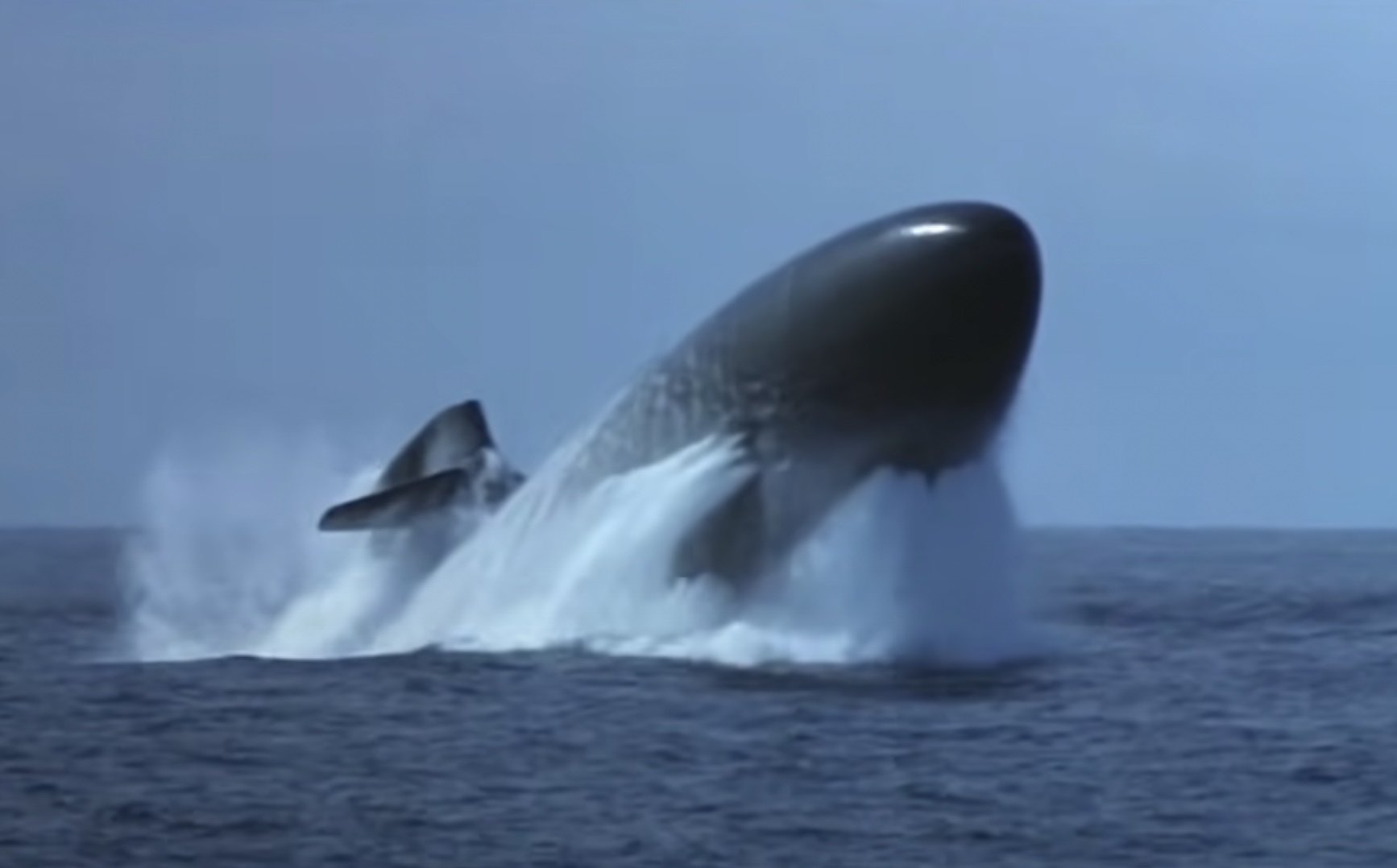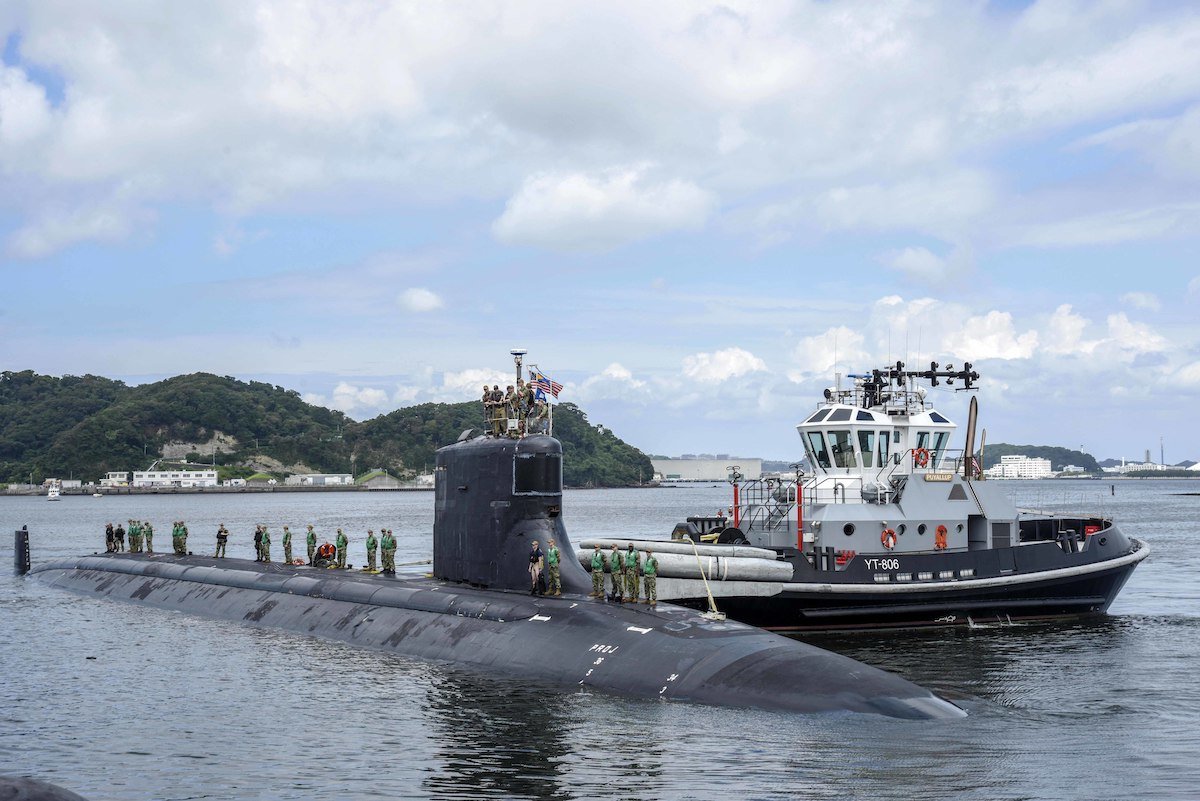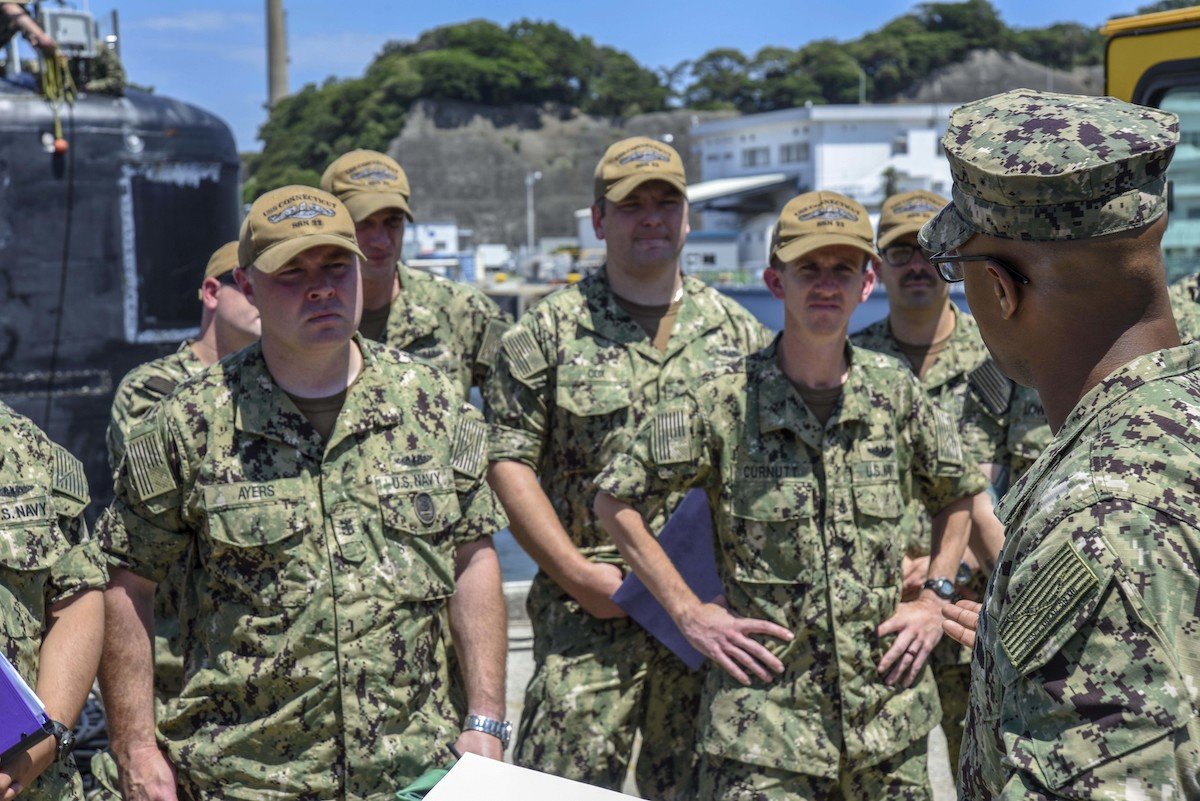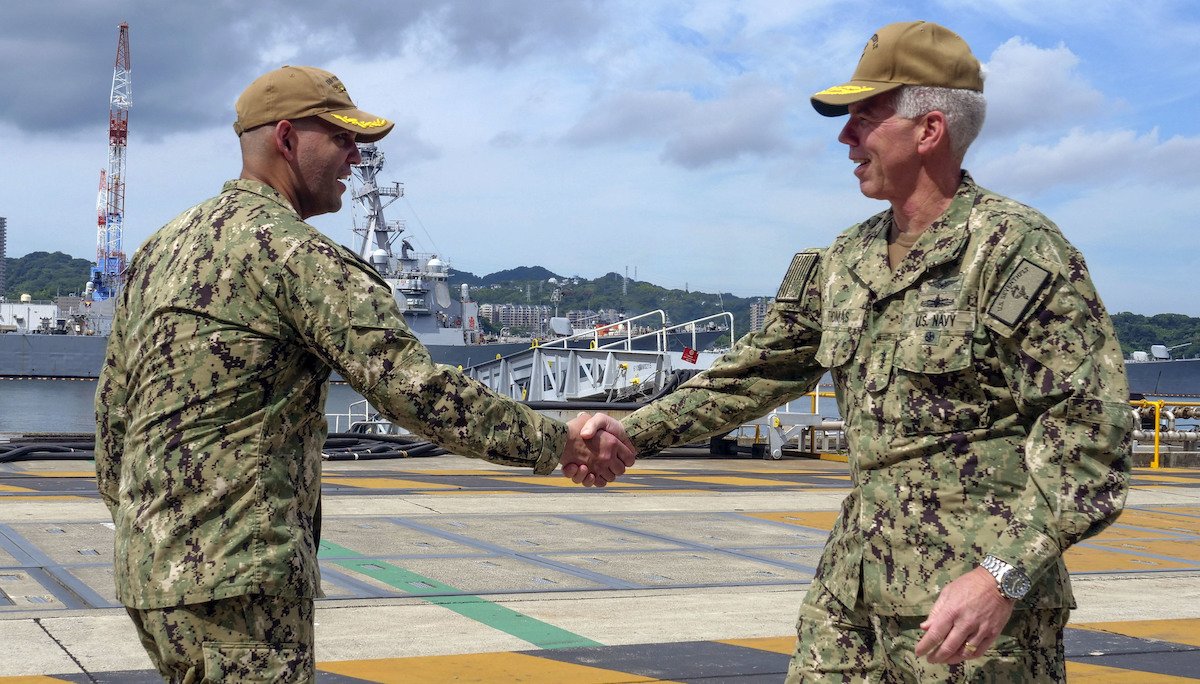‘The Ship Is Going to the Surface’ — Bad Navigation, Poor Leadership Led to Submarine Crash

After a high-speed crash into an underwater hill, the crew of the USS Connecticut took the submarine to the surface as they assessed the damage. Screenshot via The Hunt For Red October, Paramount Pictures.
When the USS Connecticut struck an uncharted underwater hill at close to 30 miles per hour in October 2021, sailors were tossed around so violently that at least one suffered a concussion, and a sailor standing watch in the engine room reported a massive oil spill he took to be from a ruptured pipe. A report released this week by the Navy paints a minute-by-minute picture of the accident aboard the $3 billion Seawolf-class submarine.
On the bridge, trying to understand the violent impact, the diving officer on duty told the crew that “the ship is going to the surface” and ordered the submarine’s diving planes to full-rise position. Within seconds, the ship was rocketing upward at 31 degrees as another sailor stood ready for an emergency ballast blow. The officer of the deck, who suffered a broken scapula in the crash, gave an order for the ship to level out at a depth of 160 feet, but the diving officer did not hear the command, and in less than a minute, the sub breached the ocean’s surface.

When the onboard computers linked up with GPS satellites overhead, the crew found they were roughly three-quarters of a mile off of where they thought they were — a huge error in navigation and one that meant they’d unknowingly been sailing the submarine through waters that should have been marked as “stay out” on their charts but weren’t.
Once they were on the surface, an engineering officer called back from the engine compartment: 5 gallons of cooking oil, used in the galley but stored in a mechanical compartment, had spilled. There was no leak.
In all, 11 sailors were hurt in the crash at the bottom of the South China Sea, two badly enough to eventually need hospitalization, while the Connecticut suffered near-catastrophic damage to its bow, including a total loss of its nose.
And the toll the accident took on the crew was not just physical: As the ship limped toward Guam, seven sailors were identified as in need of mental health treatment.
In later interviews, investigators found that the number of sailors suffering mental health effects from the grounding ballooned to 50.
All of it, the Navy now says, was preventable.

Shallow Soundings
A command investigation of the Connecticut’s grounding — dubbed an “apparent striking of a submerged object” – revealed that, despite fear and confusion after the violent impact, sailors reacted quickly and effectively to save their ship.
However, Rear Adm. Christopher J. Cavanaugh, the investigating officer, found that the Connecticut’s entire leadership team, including commanding officer Cmdr. Cameron M. Aljilani, should be relieved from duty and separated from the Navy for dereliction of duty. Cavanaugh found “an accumulation of errors and omissions in navigation planning, watchteam execution, and risk management that fell far below US Navy standards. Prudent decision-making and adherence to required procedures in any of these three areas could have prevented the grounding.”
Cavanaugh found that Aljilani and his team had been cited for poor performance several times in the previous two years but had improved little. And, he found, a series of navigation mistakes in the hours before the crash could have been prevented, had the crew been performing properly.

Though much of the exact location and sailing data in Cavanaugh’s report is redacted, the Connecticut appears to have been transiting a poorly mapped area of ocean, where the crew should have known that uncharted obstacles and shallower-than-expected bottom depths might be encountered. The ship’s navigator, who is unnamed in the public report, “reviewed and recommended an inadequate and unsafe” navigation plan, the report found. Aljilani, his executive officer, and other officers then missed opportunities to question the route planning and did not increase the number of sailors on duty on the bridge — a standard practice in waters with poor underwater mapping, according to the report.
In the hours and minutes before the accident, the crew on duty on the bridge failed to realize the ship had drifted off course, even though the ship’s depth finder, called a fathometer, began to indicate “rapid shoaling” — or a rise in the ocean floor below the ship. The officer of the deck, who had direct supervision of the ship’s bridge, told Cavanaugh “he was concerned with the shallower-than-expected soundings but that he did not assess a need to take aggressive action.”
In a “check ride” inspection with Navy instructors months before, Cavanaugh noted, the Connecticut’s crew had passed a similar scenario, properly reacting to so-called “yellow” and “red” soundings — less than 180 meters — from the fathometer, though the crew failed in that test to investigate notional causes.
But even that performance, Cavanaugh found, was damning; he wrote that the crew “peaked to perform at standards during inspections and evaluations,” but when the inspectors were gone, “leaders failed to maintain day-to-day standards.”
Signs of ‘Ineffective Command’
Signs of poor leadership on the USS Connecticut surfaced months before the submarine ran aground on an uncharted obstacle at the bottom of the South China Sea, an official Navy investigation determined. Specifically, six months before the Connecticut crashed into an underwater hill, the ship was pulling into a dock in Point Loma, California, when it struck — or “allided with,” in naval terminology — the pier it was approaching.
The minor mishap in April 2021 revealed problems with the ship’s leadership — the same problems, an investigator found, that led to the October crash.

A Navy investigation of the allision (a collision involves two moving objects, such as two ships, while in an allision, a moving ship hits a stationary object), found that Aljilani and his leadership team maintained “degraded standards in navigation, planning, poor seamanship, and ineffective command and control.”
An inspection of the Connecticut in July 2020 came to similar conclusions about the crew. Then, Aljilani was issued a Letter of Performance citing the ship’s top officers for “inadequate supervisory oversight, ineffective accountability practices, and superficial self-assessment.” Aljilani received a second reprimand, a more formal Letter of Instruction, in February of 2021, before the pier allision, “directing him to address the command’s overall performance, lack of improvement, and reluctance to accept feedback.”
But none of the poor inspection results or the allision led to any firings.
Cavanaugh recommended that Aljilani, his executive officer, the ship’s navigator, the assistant navigator, and the officer of the deck during the crash all face nonjudicial punishment and be dismissed from the Navy. The investigator recommended that all be charged under UCMJ rules for dereliction of duty, and all but the executive officer face charges for improper hazarding of a vessel. The report recommends that other sailors, including the chief of the boat, face punishment as well, but not face separation.
The Connecticut is one of just three Seawolf-class subs in the Navy, with a crew of 14 officers and 126 enlisted sailors, according to a Navy fact sheet. The class was built to chase Soviet-era submarines and was expected to number up to 30 ships, but only three were built.
The ship is now back at its homeport of Bremerton, Washington. Repairs are expected to cost of tens of millions of dollars.
Read Next:

Matt White is a former senior editor for Coffee or Die Magazine. He was a pararescueman in the Air Force and the Alaska Air National Guard for eight years and has more than a decade of experience in daily and magazine journalism.
BRCC and Bad Moon Print Press team up for an exclusive, limited-edition T-shirt design!
BRCC partners with Team Room Design for an exclusive T-shirt release!
Thirty Seconds Out has partnered with BRCC for an exclusive shirt design invoking the God of Winter.
Lucas O'Hara of Grizzly Forge has teamed up with BRCC for a badass, exclusive Shirt Club T-shirt design featuring his most popular knife and tiomahawk.
Coffee or Die sits down with one of the graphic designers behind Black Rifle Coffee's signature look and vibe.
Biden will award the Medal of Honor to a Vietnam War Army helicopter pilot who risked his life to save a reconnaissance team from almost certain death.
Ever wonder how much Jack Mandaville would f*ck sh*t up if he went back in time? The American Revolution didn't even see him coming.
A nearly 200-year-old West Point time capsule that at first appeared to yield little more than dust contains hidden treasure, the US Military Academy said.












